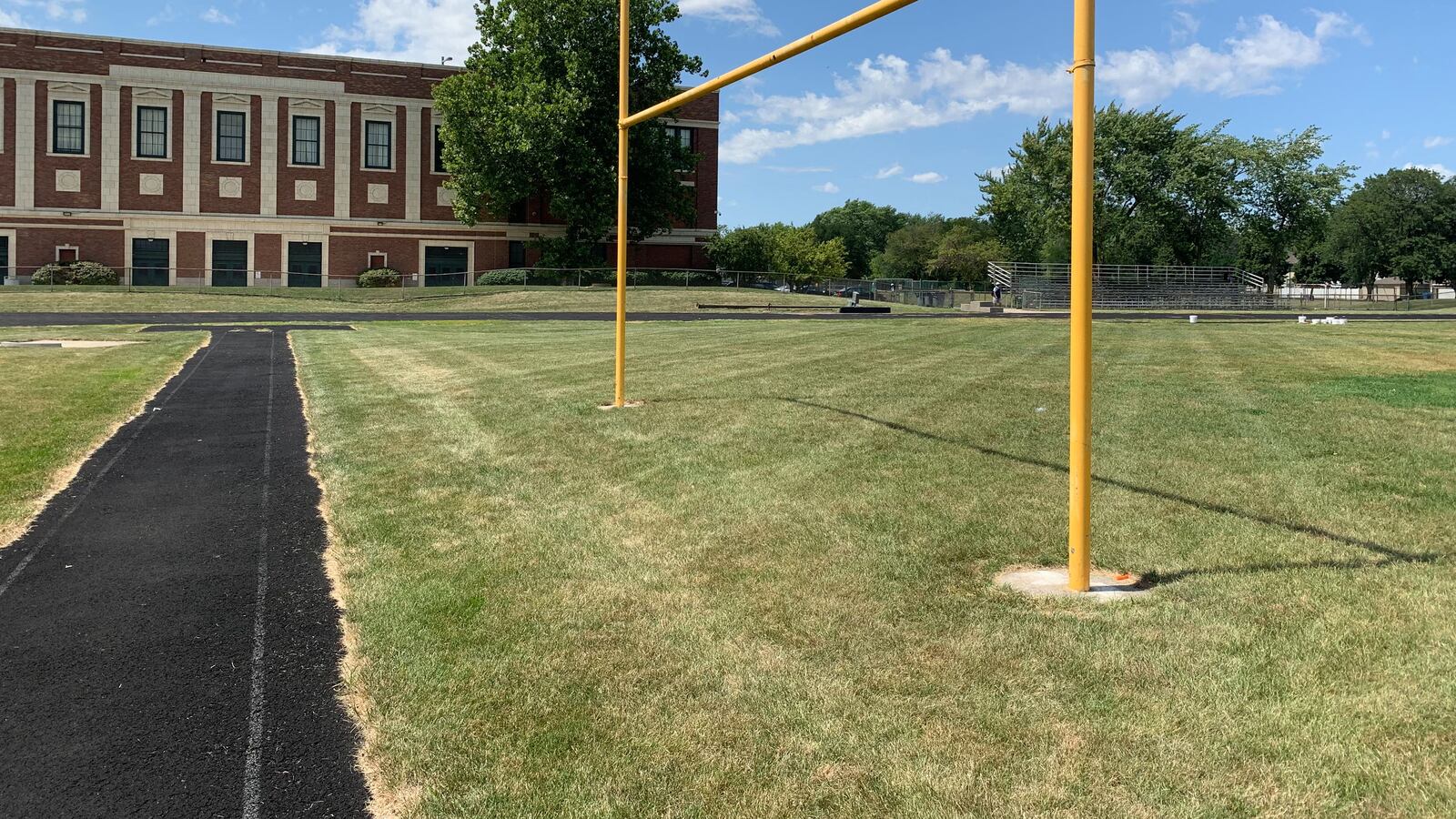Chicago plans to spend $820 million next year fixing up 300 of its schools and building more pre-K classrooms, Chicago Mayor Lori Lightfoot and schools chief Janice Jackson said Thursday, standing in a vintage classroom inside the century-old Morgan Park High School on the city’s Southwest Side.
About $1 in every $7 spent will go toward a universal pre-K expansion.
The rest will go for new roofs, playgrounds, and athletic fields for schools like Morgan Park — which stands to get $23 million for a new roof and new sports fields. The athletic powerhouse, which has 1,230 students but increasingly must compete with in-demand selective enrollment programs nearby, was left out of last year’s $1 billion capital plan announced by Lightfoot’s predecessor, Rahm Emanuel. It was Chicago’s biggest campus investment in decades.
Lightfoot said about half of the district’s schools — some 300 — will receive upgrades in the coming school year. The list is heavy on neighborhood schools, she emphasized.
That fact wasn’t lost on Morgan Park’s Local School Council chairwoman, Carisa Parker, and another longtime council member, Peggy Goddard, who were buzzing at Thursday’s news, part of a larger reveal of the first schools budget of Lightfoot’s tenure.
“We’ve been advocating for this as long as I can remember,” said Parker, a mother of four, who has served eight years on the school council.
The capital plan, which also includes $30 million in new science labs and an $85 million expansion of high-speed internet and other tech upgrades, was “created with a focus on equity, prioritizing the schools and neighborhoods that need investments most,” Lightfoot said. The city’s new mayor recently said she plans to spend the year revisiting the formula that determines how much money individual schools receive.
Find the full list of schools expected to receive upgrades under the proposed plan below.
Outside of the capital plan, the district will spend $6.18 billion in 2019-20, a slight increase from last fiscal year. The new line items announced Thursday include $12 million for teachers and curriculum materials for English language learners and $10 million to boost accessibility for disabled students.
The district also put a price tag — $10 million — on a promise announced last week to add nurses, case workers, and social workers to schools, as well as to invest in recruiting qualified workers.
“It was really important today, as we roll out this budget … to ensure that we’re providing our students, our most vulnerable students, with the resources that they need,” Jackson said.
Including the capital expenses, nearly half of the district’s budget, or about $3.8 billion, will go to staff, materials and other equipment for schools. The district released a school-by-school breakdown in the spring.
The rest goes to pay for teacher pensions, central office positions and network staff, transportation, and other items.
Of the 300 schools that will benefit from Lightfoot’s capital plan, about half of the schools in the district, 105 will receive funds to accommodate pre-K classes or to otherwise serve young learners.
“Particularly for our youngest children, we need to make sure that they feel this blanket of love and support all around them at the earliest age,” Lightfoot said. “We have a commitment and an obligation to our young people and we intend to make that commitment in everything we do.”
Lightfoot, who has been meeting with community preschool providers who have felt slighted by the city’s expansion of pre-K, said she planned to make more announcements in the coming weeks about what direction she plans to take universal pre-K, a plan set in motion by her predecessor. She made it clear the district will continue to offer more seats for 4-year-olds.
Community providers have complained that the district’s expansion of pre-K is causing them to lose students and teachers, making it hard for them to run their businesses.
Jackson said Thursday the district will take out another series of bonds to pay for the bulk of the capital upgrades. The specifics will be made public by the Aug. 28 board of education meeting, she said. The state is expected to provide not quite one-quarter, or $191 million of the total — an amount that was approved last spring as part of a six-year, $45 billion state capital bill. But it’s not clear when that money will be made available.
As of July, Chicago Public Schools had accumulated $8.4 billion in long-term debt, and it was still borrowing to pay for day-to-day operations. According to a financial presentation to the new school board then, it plans to take out $1.25 billion more in short-term loans starting this month. The district takes out short-term loans in anticipation of tax revenues because it has limited reserves.
Chicago is the third largest school district in the country, and the second most indebted, according to research from Chicago-based Merritt Research Services, which analyzes municipal bonds.

